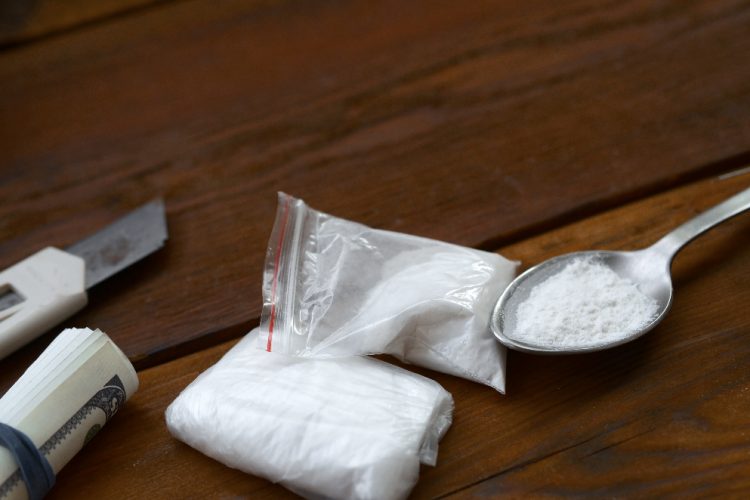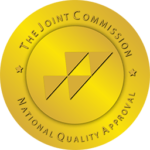Methamphetamine, commonly known as meth, is a powerful and highly addictive stimulant that affects the central nervous system. According to the CDC, during 2015–2018, an estimated 1.6 million U.S. adults reported past-year methamphetamine use, One of the stark physical signs of meth abuse is the appearance of meth sores—unpleasant and often painful skin lesions that can severely impact an individual’s appearance and health. These sores are not just cosmetic concerns but are indicative of deeper health issues associated with meth use.
Understanding Methamphetamines
Definition and Properties
Methamphetamine is a synthetic stimulant drug that increases activity in the brain and has a number of stimulating effects on the body. It belongs to a class of drugs known as amphetamines, and it can be consumed in various forms, including powder and crystal (crystal meth). The drug is known for its rapid onset of effects, which include increased alertness, energy, and feelings of euphoria.
Patterns and Effects of Meth Use
Methamphetamine use has been associated with various patterns of abuse, ranging from occasional use to chronic dependence. Users often engage in bingeing behavior, known as a “run,” which involves abstaining from food and sleep while continuously using meth to maintain the high. This pattern can lead to several adverse physical and psychological effects, such as severe dental problems (meth mouth), extreme weight loss, aggressive behavior, and paranoia. Long-term use can lead to more serious health problems, including cardiovascular damage and neurotoxicity, which can cause cognitive deficits and emotional disturbances.
The intense high followed by a profound crash that accompanies meth use often leads individuals to use the drug repeatedly, which rapidly develops into addiction. This cycle is hard to break without professional intervention and significantly contributes to physical manifestations like meth sores, which are both a symptom and a stark visual reminder of the drug’s destructive capacity.
What Causes Meth Sores?
The Physiological Effects of Meth on the Skin
Methamphetamine use can drastically reduce blood flow to various parts of the body, including the skin, due to its vasoconstrictive effects. This reduction in blood flow impedes the delivery of essential nutrients and the removal of wastes, which weakens the skin’s integrity and its ability to repair itself. Furthermore, meth use often leads to severe dehydration, exacerbating the dryness and fragility of the skin, making it more susceptible to cracking and skin infections, which can eventually evolve into open sores.
Behavioral Factors Contributing to Sores
The psychological effects of meth can induce a condition known as formication, where the user feels sensations akin to insects crawling beneath their skin. This sensation can lead to compulsive picking and scratching, which disrupts the skin’s surface and introduces bacteria into the wounds. The combination of compromised skin integrity and repetitive physical damage makes these sores difficult to heal, often leading to further complications.
Identifying Meth Sores
Appearance and Common Locations
Meth sores can vary widely in appearance. Initially, they may look like small red dots or pimples, which can open into painful ulcers if not properly managed. Common areas affected include the face, particularly the mouth and nose, arms, legs, and other areas that can be easily reached by scratching. These sores can often be identified by their clustered formation and the presence of additional abrasions or scabs around them.
Stages of Development
Meth sores typically develop in stages, starting as minor irritations or rashes that progress into deeper wounds. Poor hygiene and continued meth use can accelerate this process, leading to chronic, non-healing ulcers. Understanding these stages can help in identifying and treating meth sores before they develop into more serious infections.
Health Risks Associated with Meth Sores
Infections and Complications
Meth sores are highly susceptible to infections due to the presence of open wounds and the user’s weakened immune system. Bacterial infections can lead to cellulitis or abscesses, requiring medical intervention. If left untreated, these infections can spread to the bloodstream or other parts of the body, posing serious health risks.
Long-term Skin Damage
Repeated injury and inadequate healing can lead to significant scarring and changes in skin texture and color. These physical marks can persist long after the cessation of drug use, serving as a lasting reminder of the addiction. In severe cases, extensive skin damage may require surgical interventions to correct.
Treatment Options for Meth Sores
Immediate Care and Home Remedies
Immediate care for meth sores includes cleaning the affected area with mild soap and water to remove any debris and bacteria, followed by the application of an over-the-counter antibiotic ointment to reduce the risk of infection. Keeping the wounds covered with sterile bandages can also help protect them from further injury and contamination.
Medical Treatments Available
For more severe cases, healthcare providers may prescribe oral antibiotics to combat infection or recommend advanced wound care products that promote healing. In cases where addiction is ongoing, treatment programs that address both the physical and psychological aspects of meth use are crucial for effective healing.
Addressing the Root Cause: Meth Addiction
Importance of Treating the Addiction
Addressing meth sores effectively requires more than just topical treatments or symptomatic care; it necessitates tackling the root cause—methamphetamine addiction itself. Meth addiction is complex and multifaceted, involving both physical dependence and psychological addiction. The drug alters brain chemistry, particularly affecting areas related to decision-making, impulse control, and reward, which can make quitting without help exceptionally challenging.
Treatment for meth addiction is critical not only to heal the physical manifestations, such as sores, but also to restore mental health and prevent relapses. It is vital to understand that without addressing the underlying addiction, other interventions are likely to be temporary solutions. Users often return to drug use as a way to cope with withdrawal symptoms or because the underlying issues driving their substance use remain unaddressed.
Rehabilitation and Recovery Programs
Effective rehabilitation from meth addiction often requires a comprehensive approach that can include both inpatient and outpatient programs. These programs are designed to offer a structured environment where individuals can focus wholly on recovery without the distractions or triggers of their everyday environment.
- Detoxification: The first step in most meth rehabilitation programs involves detoxification, where the body is cleared of drugs under medical supervision. This can be one of the most challenging phases due to the intense withdrawal symptoms that can occur, which may include depression, fatigue, and an intense craving for the drug.
- Behavioral Therapy: Various forms of behavioral therapy are central to effective meth addiction treatment. Cognitive-behavioral therapy (CBT) helps patients understand their thoughts and behaviors and develop healthier thinking patterns. Motivational interviewing is another common technique used to help enhance the individual’s motivation to change. These therapies can also help address co-occurring disorders such as depression or anxiety, which are often present in individuals struggling with addiction.
- Support Groups: Participating in support groups such as Crystal Meth Anonymous or other 12-step programs can provide invaluable support from peers who are facing similar challenges. These groups offer a platform for sharing experiences and strategies for coping with addiction, and fostering a sense of community and belonging, which is crucial for long-term recovery.
- Relapse Prevention: Education on relapse prevention is a critical component of treatment, equipping individuals with the tools to recognize the early signs of relapse and to implement coping strategies effectively. This includes establishing a healthy routine, avoiding triggers, and continuing therapy or support group meetings.
- Aftercare and Maintenance: Once the initial phase of intense treatment concludes, ongoing support is necessary to ensure long-term sobriety. This can include ongoing therapy sessions, scheduled follow-ups with addiction specialists, and continued participation in support groups. Some recovery programs also offer vocational training and skills development to help individuals rebuild their lives and integrate back into society successfully.
By addressing meth addiction comprehensively, individuals are not only able to heal from the physical symptoms like meth sores but are also equipped to rebuild healthier, more stable lives, free from addiction.
Overcome Meth Addiction in Arkansas
Meth sores are just one of the many severe consequences of methamphetamine use. Understanding their causes, risks, and treatments is essential for users, healthcare providers, and communities. Effective substance use disorder treatment and robust support systems are critical for recovery, emphasizing the need for comprehensive approaches to tackle the underlying issues of addiction.
If you or a loved one are struggling with meth addiction or another form of substance abuse, get in touch with True Self Recovery today. Our treatment center is dedicated to providing individuals a safe, encouraging environment to detox, and overcome the challenges of drug abuse and addiction recovery.
FAQs
What are the first signs of meth sores?
The first signs of meth sores typically include small red dots or pimples, which can rapidly progress to open ulcers if the skin is continually picked or scratched.
Can meth sores be cured completely?
Meth sores can heal completely with proper treatment, which includes addressing the addiction itself, practicing good hygiene, and receiving appropriate medical care to prevent and treat infections.
How can I talk to someone about their meth use?
Approach the conversation with empathy and without judgment. Express your concerns calmly and focus on the person’s well-being rather than the drug use itself. Offer support for seeking professional help.
What should I do if I notice signs of infection in meth sores?
If signs of infection, such as increased redness, swelling, pus, or fever, are observed, it is crucial to seek medical attention promptly to prevent further complications.
What are meth mites?
Meth mites, or “crank bugs,” are hallucinations from methamphetamine use where individuals feel as though insects are crawling on their skin, known as formication. This sensation leads users to scratch excessively, causing skin sores. Meth mites are a psychological phenomenon and indicate a need for medical and psychological intervention.
What is meth face?
“Meth face” describes the noticeable changes in appearance from chronic meth use, including severe acne, sores, scarring, and a gaunt look due to weight loss. Users may also have “meth mouth,” with significant tooth decay and gum disease. These changes highlight the severe physical impact of meth addiction.



